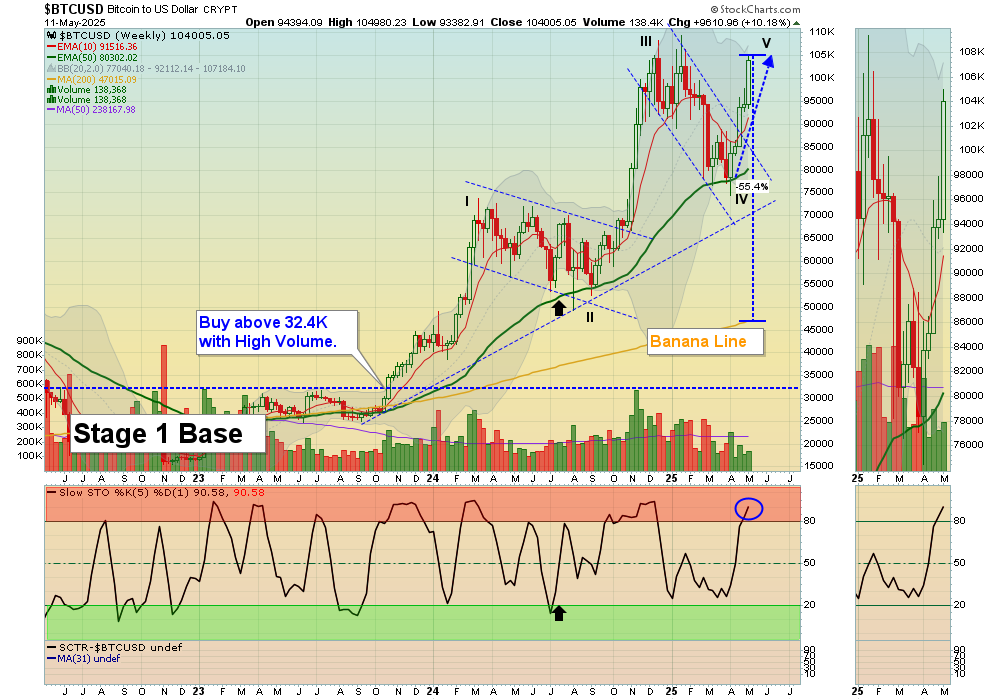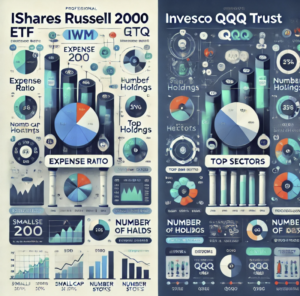
By ATGL
Updated August 23, 2024
In today’s fast-paced financial landscape, investors are constantly seeking sustainable and low-cost investment options. One of the most attractive solutions has emerged in the form of passive exchange-traded funds (ETFs), which promise a less hands-on approach to investing.
Passive ETFs aim to replicate the performance of a specific index or benchmark rather than actively select securities. This method not only drives down costs but also simplifies the investment process, making it appealing for both new and seasoned investors alike.
This article will explore what passive ETFs are, how they function, and how they compare to their actively managed counterparts. Additionally, we’ll delve into their benefits, potential risks, and effective investment strategies, ultimately guiding you toward the best options to optimize your portfolio.
Passive ETF Explained
A Passive ETF (Exchange-Traded Fund) is designed to track the performance of a specific market index or sector with minimal intervention. It mirrors the index’s composition, allowing investors to achieve diversified exposure to a range of asset classes. Unlike active funds managed by fund managers who attempt to outperform the market, passive ETFs operate without active investment decisions, leading to lower management fees and expense ratios. They also offer increased transparency; investors have access to information about the ETF’s value and holdings.
Investors can view the indicative intraday net asset value (iNAV) and complete investment portfolios, which are disclosed on trading platforms and the issuer’s website. The full passthrough of income characteristic of passive ETFs, which are structured as unit trusts, is a tax-efficient way for investors to receive dividends and interest. By providing a straightforward and cost-effective investment strategy, passive ETFs have become a popular choice for those who prefer a passive investment approach to aligning with market conditions without the higher transaction costs and minimum investment requirements typical of active management.
How Passive ETFs Work
Passive ETFs, or exchange-traded funds, are investment vehicles that aim to replicate the performance of a specific market index or sector. They are favored for their low-cost investment strategy, which contrasts with active investing, where fund managers make decisions in an attempt to outperform the market. A Passive ETF holds a portfolio of assets that is reflective of its benchmark index.
These funds provide investors with transparency, allowing them to see the net asset value (NAV) per unit, which is indicative of the fund’s value, and the indicative intraday net asset value (iNAV), both of which are updated throughout the trading day. As Passive ETFs are structured as unit trusts, they offer a full passthrough of income, such as dividends and capital gains, directly to the investors.
The mechanism of index tracking involves holding shares in proportions that mimic those found in the targeted index. For enhanced transparency, detailed portfolio disclosures and monthly fund fact sheets are provided, which list the names and weights of the investments within the fund.
Creation and redemption processes further define how Passive ETFs maintain alignment with their respective indices. These mechanisms allow the ETF to issue new units or redeem existing ones based on investor demand, thus keeping the ETF price close to its NAV.
Active vs Passive ETFs
When comparing active versus passive ETFs, investors often consider various factors such as management styles, costs, and potential for outperformance. Passive ETFs aim to mirror the performance of a benchmark index or asset class, making them a popular choice for those seeking market-level returns without hefty management fees. These funds operate with minimal active decision-making, leading to lower expense ratios. In contrast, active ETFs are managed by portfolio managers who conduct in-depth research and trading with the goal of outperforming the market. However, this comes at the cost of higher management expenses.
Despite the potential for higher returns in active ETFs, studies indicate that most active managers fail to consistently outperform passive funds over the long term. Moreover, passive ETFs offer advantages like cost efficiency and simplification of the investment process. On the other hand, active ETFs may appeal to those seeking tailored investment strategies that adapt to market conditions.

Advantages of Passive ETFs: Cost-efficiency, simplicity, tax efficiency, and lower transaction costs. Disadvantages of Active ETFs: Higher management fees, potentially underperforming the market, and increased tax implications due to frequent trading.
Benefits of Investing in Passive ETFs
Investing in Passive ETFs offers several advantages for those seeking a straightforward approach to entering the stock market with efficiency and ease. These funds come with lower management fees than their actively managed counterparts, presenting a cost-effective option for investors. Thanks to the inherent nature of passive funds, investors gain instant diversification within a single transaction. This wide-ranging market exposure would otherwise require the purchase of multiple individual stocks.
Passive investment strategies, the bedrock of passively managed ETFs, are designed to mirror the returns of a particular index. This approach is typically associated with reduced risk over the long term, appealing to investors looking for steady growth. Moreover, passive ETFs are an excellent avenue for investors who lack either the time or the inclination to delve into intensive market research or complex active management strategies. Lastly, the transparency of these funds ensures that investors have a consistent view of the underlying fund’s value and its portfolio constituents, thanks to regular reporting and disclosures.
Benefits of Investing in Passive ETFs
- Lower Costs: Minimal management fees reduce investment expenses.
- Diversification: Access to a broad range of securities in a single investment.
- Risk Management: Aiming to replicate market returns, potentially reducing risk.
- Convenience: Ideal for those with limited time or interest in active management.
- Transparency: Regular disclosures offer clear insight into fund composition.
These factors combine to make passive ETFs a compelling choice for a variety of investors.
Risks and Drawbacks of Passive ETFs
Investing in Passive ETFs, while popular due to their simplicity and lower costs, comes with its own set of risks and drawbacks that investors must consider.
Market Risk: Passive ETFs mirror the performance of an underlying index, meaning any downturn in the index results in a corresponding decline in the ETF’s value. Investors are fully exposed to market risks without the potential for outperforming the market through selected investments.
Tracking Risk: Discrepancies can occur between an ETF’s performance and its benchmark index, primarily due to expenses and trading costs. This can lead to returns that are lower than the index, deviating from the ETF’s intended performance.
Liquidity Risk: Instances of thin trading can affect an ETF’s liquidity, potentially making it challenging for investors to sell their holdings at preferred prices.
Limited Flexibility: Passive investing does not allow for selective stock picking within an index. Investors cannot adjust their holdings in response to market conditions or individual stock performance.
Capped Returns: By design, passive funds aim to match market returns, which inherently means there is no opportunity for achieving above-market returns that might be possible with active management.
Risks and Drawbacks of Passive ETFs
- Market Risks
- Tracking Risk
- Liquidity Risk
- Limited Flexibility
- Capped Returns
Investment Strategies With Passive ETFs
Passive Exchange-Traded Funds (ETFs) offer a straightforward approach to investing by mirroring specific market indices like the S&P 500 or Nasdaq. This investment method enables investors to gain broad market exposure without the need for active management. The fund manager adheres strictly to the index, ensuring the investment strategy remains simple and focused.
For individuals seeking a long-term investment route, passive ETFs present a low-cost option. Due to their passive nature, these funds usually involve lower management fees when compared to actively managed funds. Additionally, investing in passive ETFs typically demands less time commitment as it circumvents the need for regular trading and dynamic portfolio adjustments that are characteristic of active investing.
One of the primary benefits of passive ETFs is their trading flexibility. They can be bought and sold throughout the trading day in a manner similar to individual stocks. This contrasts with mutual funds, which only allow trading at the end of the market day at the net asset value.
Moreover, investors can employ strategies such as dollar-cost averaging to build their investment steadily over time. Passive ETFs also support diversification objectives, as they hold a variety of assets within a single investment, reducing risks associated with individual stocks.

By leveraging these strategies, passive ETFs can be integral components of a balanced and efficient investment portfolio.
Best Passively Managed Etfs You Should Consider
When considering the best passively managed ETFs, it’s important to align your selection with your investment goals and risk tolerance. Index funds are a popular choice for broad market exposure, with the objective being to replicate market indices. Here’s a quick glance at some widely acknowledged passive ETFs for diversified investment strategies:
- S&P 500 ETFs – These ETFs track the S&P 500 Index, comprising large-cap U.S. stocks, suitable for those seeking exposure to leading American companies.
- Total Market ETFs – Ideal for investors wanting to mirror the performance of the entire U.S. stock market, covering various market capitalizations.
- International ETFs – For those aiming to diversify beyond the U.S., these ETFs track global or region-specific indices.
- Bond ETFs – Investors seeking steady income with lower risk might consider ETFs that track indices of various bonds.
- Sector ETFs – These cater to investors looking to invest in specific sectors of the economy, such as technology, healthcare, or energy.
Passive ETFs are cost-efficient, typically having lower expense ratios due to their passive investment approach, which minimizes management fees and transaction costs. Moreover, they offer tax efficiency as passive strategies incur fewer capital gains distributions than active funds. Investing in passive ETFs is a straightforward way to gain diversified exposure to an array of asset classes, valuable for those with limited time or expertise in direct market engagement.
Perfect Your ETF Investment Strategy With Above the Green Line
Investing in passive ETFs can be a cornerstone for refined ETF investment strategies like Above the Green Line – a systematic approach focusing on investments that outperform the market. These ETFs, known for their low costs and diversification, faithfully track a range of market indexes.
Benefits of Passive ETF Investment:
- Low Management Fees: Passive ETFs eschew active managers, slashing the fees that eat into returns.
- Instant Diversification: A single passive ETF purchase spreads risk across multiple shares or sectors.
- Cost-Effectiveness: With generally lower expense ratios than mutual funds, passive ETFs keep more money in your pocket.
- Market Reflection: By mirroring a benchmark index, passive ETFs ensure your portfolio mirrors market performance.
To align with Above the Green Line, choose passive ETFs that are beating market averages. This enhances diversification without compromising on the hallmark benefit of passively managed funds: keeping costs low. Remember, passive ETFs trade throughout the trading day, allowing for flexibility and timely execution of this strategy.
In summary, passive ETFs’ low expense and instant diversification make them a valuable asset in achieving the goals of Above the Green Line. They enable investors to participate in market gains while controlling costs, crucial for long-term investment success. Join Above the Green Line today and earn more.






